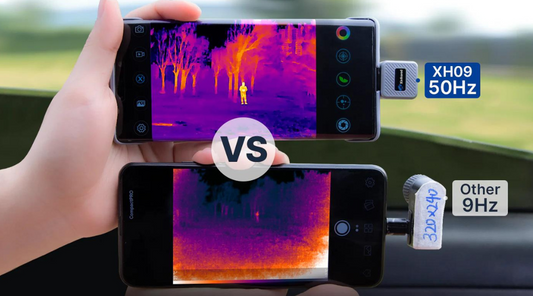3 Important Keys to Knowing What Thermal Resolution Means
Thermal resolution is a critical aspect of infrared imaging that plays a pivotal role in various industries, from healthcare to manufacturing. To begin our journey into the realm of thermal resolution, let's first grasp the basics. Thermal resolution refers to the ability of an infrared imaging system to distinguish between objects with similar temperatures. This capability is crucial for applications like detecting anomalies in electrical systems, monitoring building insulation, and even medical diagnostics. In this guide, we'll unravel the mysteries behind thermal resolution and explore the three key elements that are essential for a comprehensive understanding.

Key 1: Definition and Basics of Thermal Resolution
At its core, thermal resolution is about clarity. Infrared imaging, which captures heat signatures rather than visible light, relies on high thermal resolution for accurate temperature readings. The higher the resolution, the more details can be discerned in the thermal image.
Measuring thermal resolution involves assessing the smallest temperature difference that the system can detect. It's akin to the fine-tuning of a musical instrument – the more precise the tuning, the clearer the melody. In the infrared world, this translates to sharper and more detailed thermal images.
Let's connect the dots between thermal resolution and image clarity. Think of a scenario where you're inspecting an electrical panel. With high thermal resolution, you can identify hotspots with precision, allowing for early detection of potential issues. In contrast, lower thermal resolution might blur the lines, making it challenging to pinpoint specific temperature variations.

Key 2: Factors Influencing Thermal Resolution
Understanding thermal resolution requires a grasp of the factors influencing its performance. The first factor is the technology behind the infrared sensor. Advanced sensors with cutting-edge technology can provide superior thermal resolution, offering a clear advantage in various applications.
Pixel size is another crucial element. Larger pixels can result in a loss of detail, affecting the overall thermal resolution. It's like painting a detailed picture with broad strokes – the finer nuances may get lost. Optimal pixel size ensures that the thermal image retains its clarity and accuracy.
Consider the signal-to-noise ratio (SNR) as the conductor orchestrating the symphony of thermal resolution. A higher SNR ensures that the signal (useful thermal data) stands out against the noise (unwanted interference), contributing to enhanced thermal resolution.
Environmental factors, such as ambient temperature and humidity, also play a role. An awareness of these external influences allows for adjustments, ensuring reliable thermal imaging performance in diverse conditions.

Key 3: Applications and Implications of Thermal Resolution
Now that we understand the fundamentals and influencing factors, let's explore the real-world applications of high thermal resolution.
In the medical field, thermal imaging with high resolution is invaluable for diagnosing conditions like inflammation and circulatory disorders. By capturing subtle temperature variations, medical professionals can make more accurate assessments, leading to better patient outcomes.
Industries like manufacturing and predictive maintenance benefit from the ability to detect early signs of equipment malfunction. High thermal resolution enables precise monitoring, helping organizations avoid costly downtime and prevent catastrophic failures.
Looking ahead, advancements in thermal resolution technology hold promise for even broader applications, from autonomous vehicles, enhancing their perception systems to environmental monitoring for climate research.

Mastering thermal resolution opens doors to a world of possibilities in various sectors. The three keys we've explored – understanding the basics, recognizing influencing factors, and appreciating real-world applications – form the foundation for navigating the intricacies of thermal imaging.
As we continue to witness advancements in technology, staying informed about thermal resolution becomes paramount. It's not just about seeing heat; it's about seeing it with clarity and precision.




